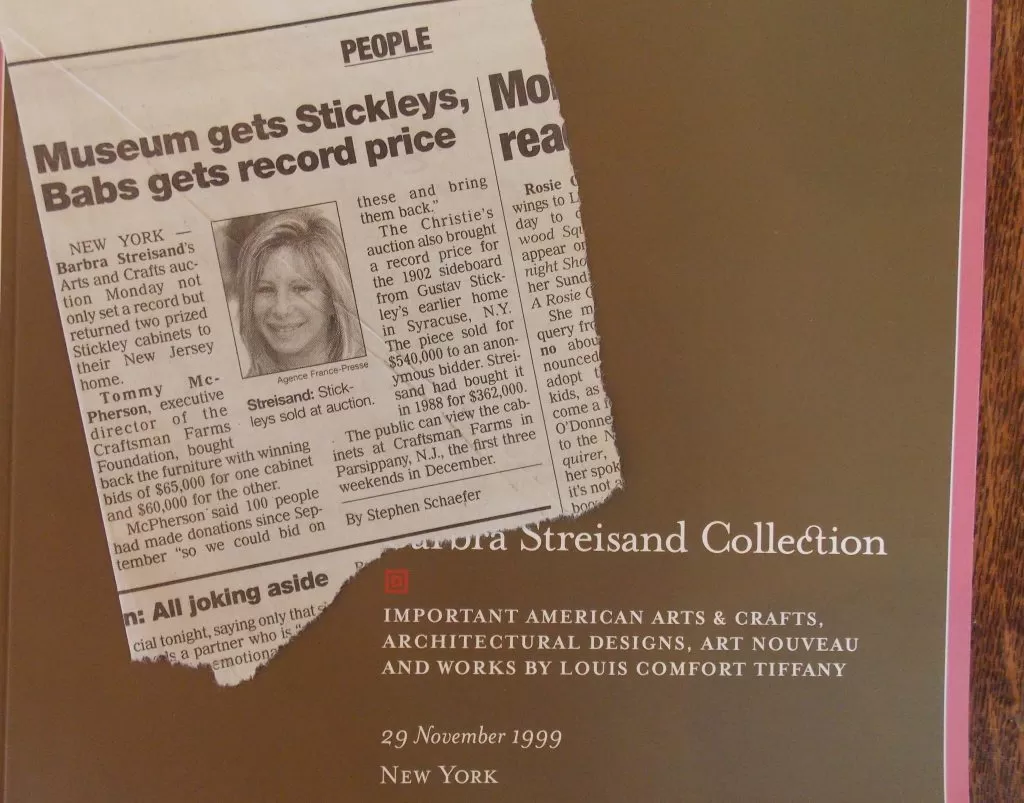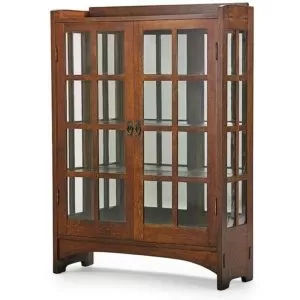A History Lesson
by Bruce Johnson
History, as we all know, has a remarkable way of repeating itself, prompting writer George Santayana to warn, “Those who do not learn history are doomed to repeat it.”

I was still decorating my apartment with late Victorian Golden Oak furniture when the first astute observers began plucking dusty pieces of Gustav Stickley, Harvey Ellis, and Charles Limbert out of antique shops, thrift stores, and country auctions. By the time I came face-to-face with twelve stern, high-back Roycroft dining room chairs in Mrs. Summerwill’s basement in Iowa City, Arts and Crafts furniture had already begun drawing the attention of magazine editors, museum curators, and interior designers, especially in New York, Chicago, and Boston.
I was lucky, however, as Arts and Crafts furniture in rural Illinois and Iowa was then still considered “Mission Joke.” Dealers were glad to dump their Stickley and Limbert furniture on a former English teacher turned antiques refinisher driving a rusty Ford van with a faded Funk’s Seed Corn bumper sticker. I made a lot of mistakes along the way, such as a mission oak hide-a-bed that shed veneer faster than a tomcat in August.

But when a signed Stickley or branded Limbert piece did show up, it was cheap. There was no internet or even a reliable price guide to educate any of us and shipping heavy Arts and Crafts furniture to Chicago or New York proved prohibitively expensive. As time went on, however, and more people began buying Arts and Crafts furniture, prices rose steadily. Sometimes dramatically. Eventually my own buying slowed, as I was priced out of the market for the key pieces I wanted for my home.

One of those key pieces was a two-door Gustav Stickley china cabinet with exposed tenons and an arched toeboard. In 1990, I finally bought one for $3,000, the most I had paid for any piece of Arts and Crafts furniture. I could only justify it by selling my Limbert single-door bookcase. In 2001, however, I lost my prized china cabinet. My former wife soon sold it for $9,000 to an antiques dealer, who then marked it up and sold it at my own Grove Park Inn Arts and Crafts Conference. Poetic justice? Just last week, though, a collector called me up wanting to sell the same model Gustav Stickley china cabinet. His price: $3,000.
History repeating itself?
While that price is indicative of a current soft market for Arts and Crafts furniture, especially when compared to those heady highs of the 1990s, I’m actually not discouraged by it. I don’t think the appeal of the Arts and Crafts style has softened. I just think those high prices turned a lot of young people away. Now that Arts and Crafts furniture has become more affordable, I’m hoping young people will be taking another look — and finding the prices within their budgets.
As for me, well, I’m still thinking about where I could squeeze in that Gus china cabinet.
Until next week,
“I avoid negative people; they find dark linings in a silver cloud.”
Bruce
